Black box, brain box, pulse pack, igniter box, CDI module, power pack, whatever you want to call it: if your motorcycle is newer than 1980, it probably has a black rectangle spouting wires under the seat that makes the magic happen. If you're lucky, you're reading this for your own education. If you're not, you're wondering what a CDI does... because you suspect yours doesn't. Let's take a look inside.
CDI stands for capacitor discharge ignition (alternatively, “capacitive.”) If you’re new to capacitors, they’re similar to batteries in that they can store energy for later. What sets them apart is their ability to release all that energy near instantaneously, which is ideal for an ignition circuit.
Here's a CDI box in a dirt bike. You'll often find them lurking under your seat. Andy Greaser photo.
The basic CDI system is a trigger mechanism, coils, and a box, often black, with capacitors and other circuitry inside. The trigger tells the box to fire, the box determines when to fire which coil with the capacitors, and zap goes the spark plug, ad infinitum. In addition to dischargin’ those capacitors, the box may also influence your rev limit, timing advance, and other variables related to spark, but that’s it.
A popular variation of this system is TCI, which doesn't use capacitors in the same way. For the purposes of this article, I'll refer to all the black box ignitions as CDI, since they all use the same basic components: box, coils, sensor.
This is a TCI box. On an electrical engineering level, it's different from CDI, but the troubleshooting process is the same. Andy Greaser photo.
CDI's complexity is in its circuitry, but its ancestors relied on clever mechanical systems to fire the coils. Springs, weights, cam lobes, and other simple machines worked together to deliver spark at the right time, even as revs rose. These ignitions did just fine for decades, but those moving parts wear out over time. Motorcyclists accepted occasional maintenance in exchange for rugged reliability, easy adjustment, and cheap cost of replacement.
Motorcyclists accepted occasional maintenance in exchange for rugged reliability, easy adjustment, and cheap cost of replacement.
In a points system, the crank basically opens and closes a switch. Eventually, your switch wears out. Not so with modern sensors. Andy Greaser photo.
That's all great, but the jump to CDI was like going from carburetors to fuel injection. Electronics gave manufacturers new control over their engines. The ignition advance, once mechanically limited to a curve, could be tuned to squiggle any way you liked all the way to redline (read Lemmy's timing article if you'd like more on this). Increased power, better efficiency, less maintenance, and fewer moving parts earned CDI, and systems like it, a good reputation. But that doesn't mean they stay problem-free.
So you’ve got a spark problem on your CDI-equipped motorcycle. Symptoms could include misfiring, dead cylinders, backfiring, bizarre tach behavior, and countless other things related to how your engine's running. The problem may get worse as the bike warms up. It might not even hold low revs at all.
The problem may get worse as the bike warms up. It might not even hold low revs at all.
You’ve tested everything but the CDI unit, including the charge of your battery, your spark plugs, the health of your coils, and the triggering mechanism itself. Could it be your black box? Sure, particularly if your motorcycle is older, but still new enough to have CDI. Black box ignitions tend to fail all at once, unlike the gradual decrease in performance you’d expect from a points-ignition motorcycle. (Some riders retrofit points-based systems onto their newer motorcycles to avoid the shortcomings of CDI systems. Conversely, plenty of other riders swap factory points-and-condenser setups out for more modern ignition.)
The key is eliminating every variable until only the box remains, because they’re not easy to troubleshoot. Most are sealed up like a sarcophagus. These systems are supposed to be maintenance-free, but even a loose trigger sensor can mess with your bike’s little brain.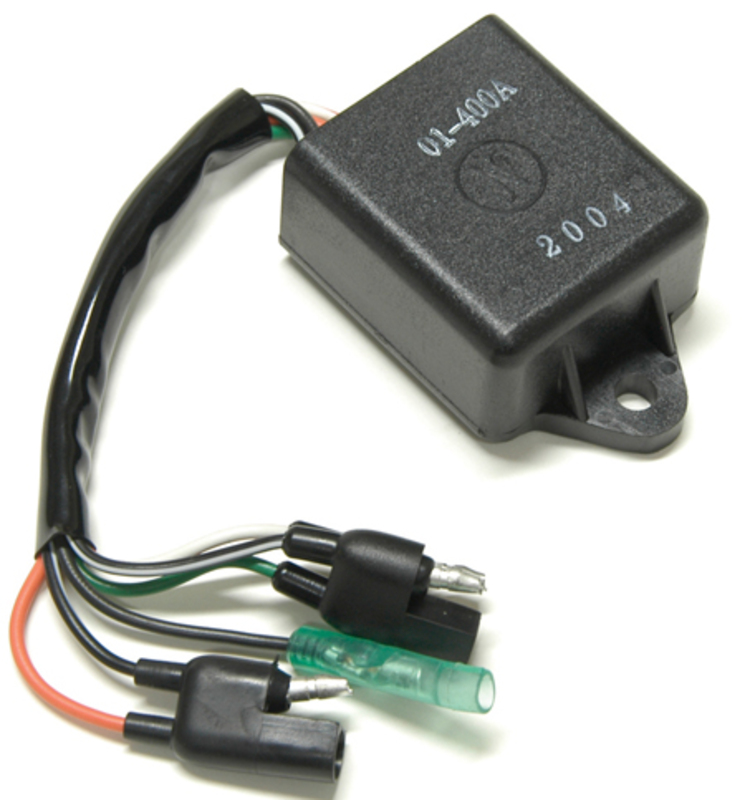 Some manufacturers give specs for testing your box pin-by-pin, but don’t count on it. The best solution when troubleshooting black boxes is to replace a suspicious one with a known good part after checking the other possibilities first. Be careful when buying replacements. An eBay special may have the same issue as yours, and a new replacement may not be returnable once installed.
Some manufacturers give specs for testing your box pin-by-pin, but don’t count on it. The best solution when troubleshooting black boxes is to replace a suspicious one with a known good part after checking the other possibilities first. Be careful when buying replacements. An eBay special may have the same issue as yours, and a new replacement may not be returnable once installed.
See that rectangular bump on the flywheel rotor of this Yamaha Vision? A magnetic pickup senses it as it goes by. Jetav8r.com photo.
The box itself is packed with electronics, and delicate components inside can fall victim to vibration and moisture over time. Thousands of miles of bouncing down the road can take its toll. Heat can also damage or destroy a black box. Finally, if you see the Magic Smoke come out, time for a new one.
Sure, there are aftermarket options for all kinds of applications. Most offer more power, and the best units come from reputable tuners. Do your research before buying one. You can also gain power by keeping your stock box, but using an ignition advance kit to alter the trigger mechanism. Again, read up on safe options for your motorcycle before attempting. I've tried both with good results.
Most offer more power, and the best units come from reputable tuners. Do your research before buying one. You can also gain power by keeping your stock box, but using an ignition advance kit to alter the trigger mechanism. Again, read up on safe options for your motorcycle before attempting. I've tried both with good results.
If you’d like to know more about black boxes, the engineering behind them, and troubleshooting for your specific motorcycle, there are endless resources online to check out. We owe countless miles to these creations. Might as well know a little about what’s happening under your seat.
Disclosure: We may get commissions for purchases made through links in this post.
Yamaha’s road to big-bore machines began with the creation of the Yamaha Grizzly 600. This large-displacement UTV is a pillar of the ATV landscape and enormously responsible for spawning the 1,000-cc behemoths that are the rave of the off-roading community. This four-wheeler was the centerpiece of the North American outdoor life back in the late ’90s – one of the vehicles that helped restore the ATV industry from near-extinction.
This four-wheeler was the centerpiece of the North American outdoor life back in the late ’90s – one of the vehicles that helped restore the ATV industry from near-extinction.
Produced from 1998 to 2001, the Yamaha Grizzly 600 had the largest engine displacement during its time. Boasting a 595-cm3 Paris-Dakar-inspired engine, Ultramatic V-belt transmission, functionality, and pastel bodywork, this 4×4 was a big hit with consumers and off-roaders alike.
Because of its standout features – including individually-controlled front and rear brakes, a one-way sprag clutch, selectable 2WD and 4WD (with a push of a button), oil-cooling system, and towing capacity – it was regarded as the King of 4x4s. Not only did the quad become the talk of the town fast, but it also became a huge contributor to the growth of mud events across the country. Want to know more interesting stuff about the Grizzly 600? Read on.
The Yamaha Grizzly 600 4×4, produced from 1998 to 2001, has a 595-cc four-stroke SOHC engine from the big-selling Enduro-style ’86 XT600 Ténéré – a culmination of Yamaha’s efforts to enhance the off-road performance of XT models further and make it more suitable for full-fledged rally competition. The air- and oil-cooled power mill gets its carburetion from a 40-mm constant velocity Mikuni BST. The transmission features a V-belt driven dual-range Ultramatic with reverse, cranked by a primary electric and auxiliary recoil starter with auto decompression. The suspension system uses front MacPherson struts and a mono-cross swingarm for the rear.
The air- and oil-cooled power mill gets its carburetion from a 40-mm constant velocity Mikuni BST. The transmission features a V-belt driven dual-range Ultramatic with reverse, cranked by a primary electric and auxiliary recoil starter with auto decompression. The suspension system uses front MacPherson struts and a mono-cross swingarm for the rear.
It has a total of four trims and at least 11 models throughout its four-year production run, namely:
| Year | Model |
|---|---|
| 1998 Yamaha Grizzly 600 | YFM600K |
| 1998 Yamaha Grizzly 600 | YFM600FWAL |
| 1998 Yamaha Grizzly 600 | YFM600FWALC |
| 1998 Yamaha Grizzly 600 | YFM600FWACK (for California) |
| 1998 Yamaha Grizzly 600 | YFM600FWAK |
| 1999 Yamaha Grizzly 600 | YFM600L |
| 2000 Yamaha Grizzly 600 | YFM600L |
| 2000 Yamaha Grizzly 600 | YFM600FWAN |
| 2000 Yamaha Grizzly 600 | YFM600FWANC |
| 2001 Yamaha Grizzly 600 | YFM600FHN (Hunter) |
| 2001 Yamaha Grizzly 600 | YFM600FN |
Often confused with the Big Bear (before IRS, that is), the Grizzly 600 is a monster on low-end, making it a charm for hauling needs.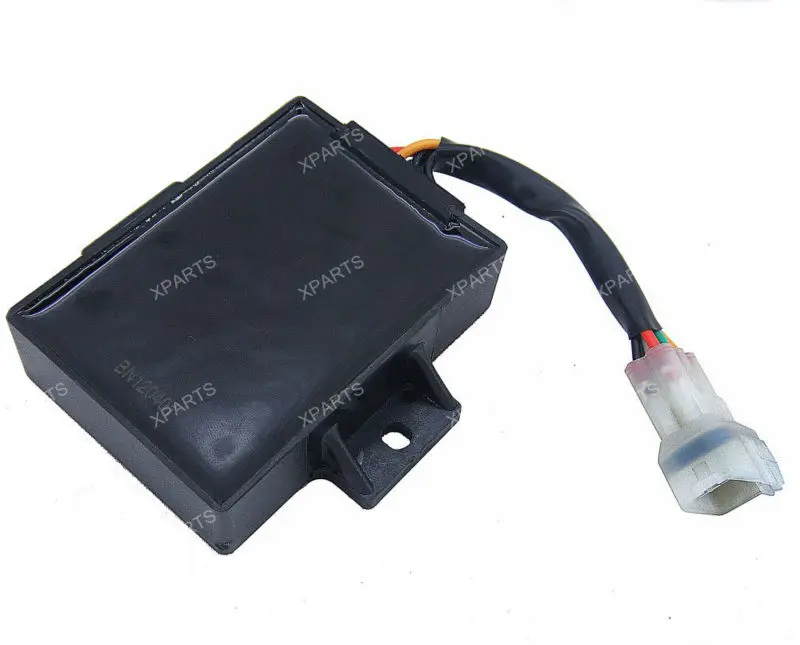 It rides as well on factory 25-inch tires as on 27-inch 589s, some wheel spacers, and a decent clutch kit. Thanks to its race-ready engine, the wheeler never disappoints – especially when it comes to meeting the whims of off-roaders, young and old.
It rides as well on factory 25-inch tires as on 27-inch 589s, some wheel spacers, and a decent clutch kit. Thanks to its race-ready engine, the wheeler never disappoints – especially when it comes to meeting the whims of off-roaders, young and old.
Many riders enjoy this 4×4 in stock form. But aficionados stretch the vehicle’s capabilities further with the aid of a snorkeled belt and motor intake, relocation of the oil cooler, jetting, and lift kits, to name a few.
The current retail price of the quad ranges from $825 to $4,210, depending on the model year, overall vehicle condition, and add-ons. References for the list price of the ’98 model are a bit obscure except for the value of the Hunter Edition.
It was the priciest of all the trims released in the market in 2001 for $7,099. For an additional $3,100, consumers can get radio-cassette speakers, high-performance exhaust, power blades, and a snowblower included in the package when buying a brand-new Yamaha Grizzly 600.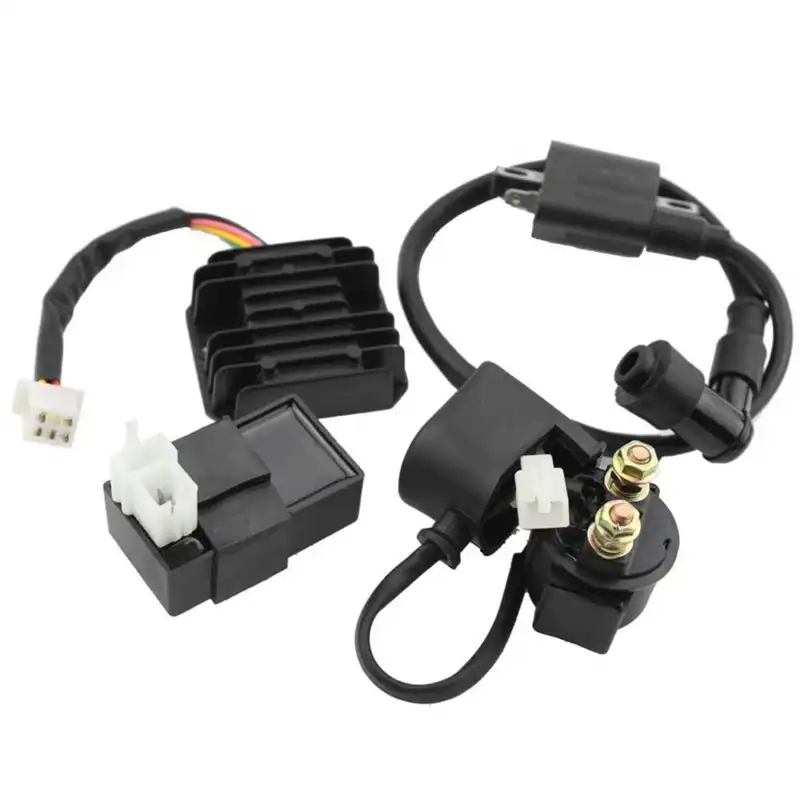
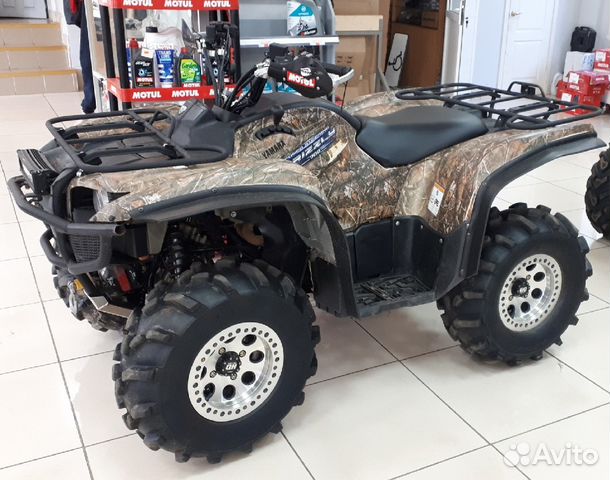 75 US quarts/2.6 liters, 2 US quarts/1.9 liters without filter replacement, and 2.1 US quarts/2 liters at oil filter change. Use 10W-30, SAE 5W, or 20W-40 Yamalube 4 4-stroke oil or its equivalent for best engine performance. Never mix anti-friction additives in the oil to prevent starter or clutch slippage. Also, make sure not to use oil with Energy Conserving or Energy Conserving II labels. The engine oil should have an API service grade of at least SJ (manufacturer-recommended SE/SF/SG grades are now obsolete).
75 US quarts/2.6 liters, 2 US quarts/1.9 liters without filter replacement, and 2.1 US quarts/2 liters at oil filter change. Use 10W-30, SAE 5W, or 20W-40 Yamalube 4 4-stroke oil or its equivalent for best engine performance. Never mix anti-friction additives in the oil to prevent starter or clutch slippage. Also, make sure not to use oil with Energy Conserving or Energy Conserving II labels. The engine oil should have an API service grade of at least SJ (manufacturer-recommended SE/SF/SG grades are now obsolete).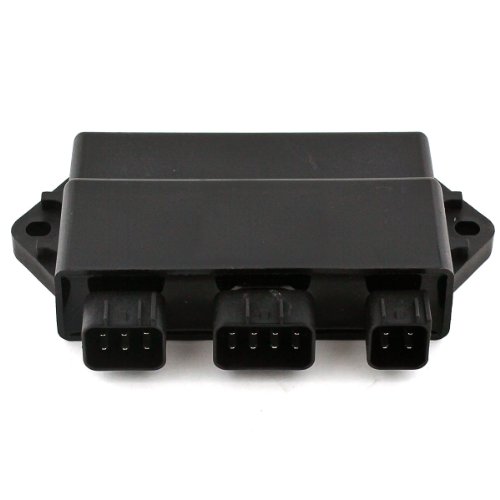 A 10.2-feet turning radius, mated with a machined Niche Drive clutch Sheave Assembly (view on Amazon), allows for higher gearing and a smoother ride.
A 10.2-feet turning radius, mated with a machined Niche Drive clutch Sheave Assembly (view on Amazon), allows for higher gearing and a smoother ride.  22-0.25 kgf/cm2, 3.2-3.6 psi). The maximum recommended pressure is 36 psi/250 kPa (2.5 kgf/cm²) when seating the tire beads. Right-hand operated dual-disc front brakes, and left-hand-and-right-hand-operated rear drum brakes provide the quad dependable stopping power.
22-0.25 kgf/cm2, 3.2-3.6 psi). The maximum recommended pressure is 36 psi/250 kPa (2.5 kgf/cm²) when seating the tire beads. Right-hand operated dual-disc front brakes, and left-hand-and-right-hand-operated rear drum brakes provide the quad dependable stopping power.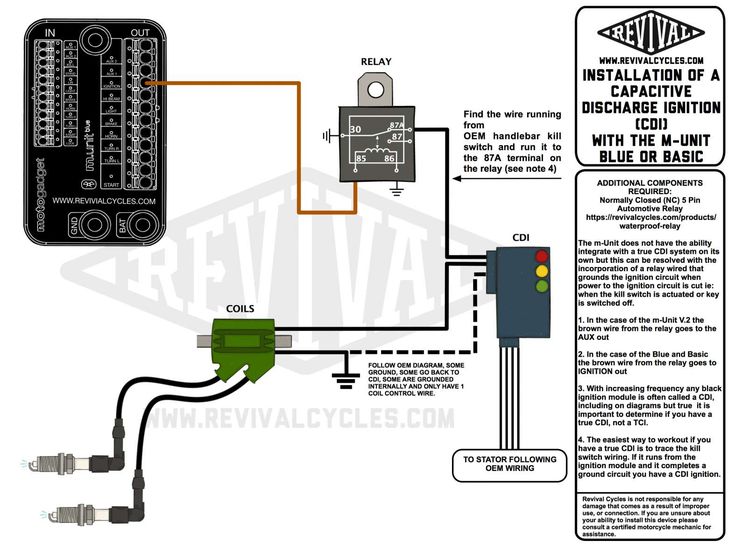 The seat height is 34.1 inches – perfect for riders with a 31-inch inseam. A Kimpex 358482 Outback Trunk Rear (view on Amazon) also converts your Grizzly into a two-up vehicle.
The seat height is 34.1 inches – perfect for riders with a 31-inch inseam. A Kimpex 358482 Outback Trunk Rear (view on Amazon) also converts your Grizzly into a two-up vehicle.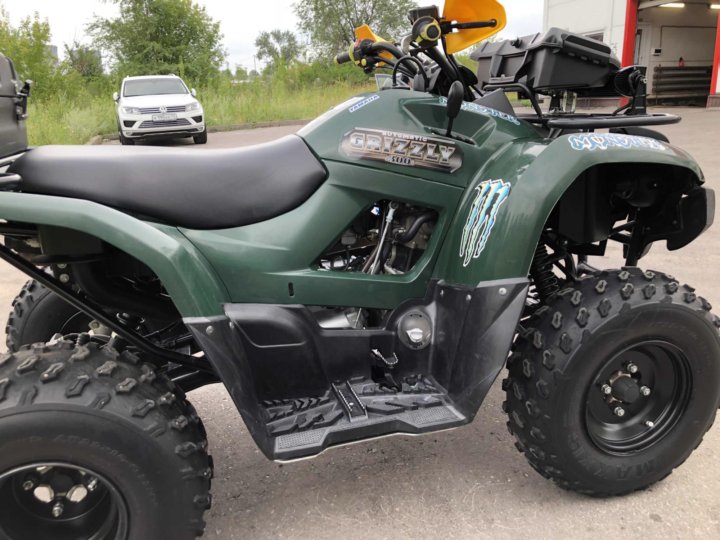 The Yamaha Grizzly 600 4×4 comes standard with storage compartments and front/rear utility racks. A modest instrument cluster allows riders to keep a tab of mileage and other crucial information. Dual 30-watt Krypton headlights on the front fenders, a 7.5-watt tail/brake light, and 1.7-watt warning indicators provide superior light distribution.
The Yamaha Grizzly 600 4×4 comes standard with storage compartments and front/rear utility racks. A modest instrument cluster allows riders to keep a tab of mileage and other crucial information. Dual 30-watt Krypton headlights on the front fenders, a 7.5-watt tail/brake light, and 1.7-watt warning indicators provide superior light distribution.Here are the most common challenges owners have encountered with their Grizzly four-wheelers that are worth taking note of:

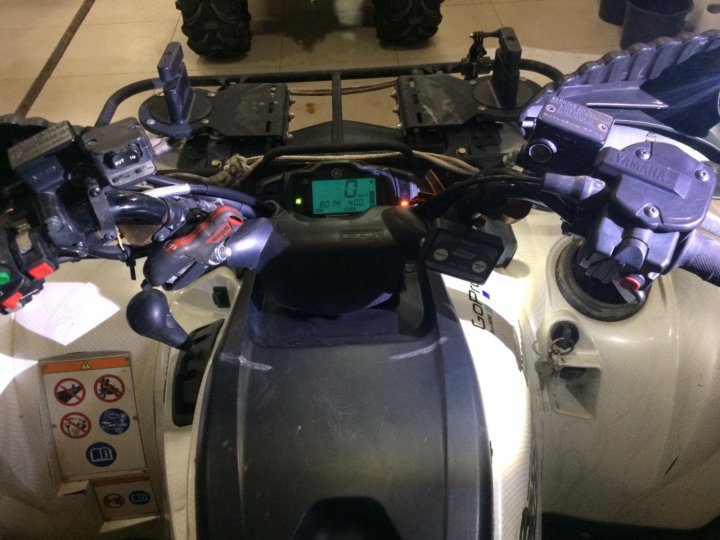 Use silicone brake grease to withstand heat better than regular ones and do not swell up the O-ring.
Use silicone brake grease to withstand heat better than regular ones and do not swell up the O-ring.Other anecdotal concerns with the Yamaha Grizzly 600 include the quad being very sensitive to water. Because nothing is between the cylinder and the exterior, the piston reaches around 1000° when in deep water. And once the water cools the cylinder, it shrinks immediately – resulting in engine seizure. Another thing is that the pistons are a bit short on the 600s.
During extreme cylinder and piston wear, the piston would kick sideways in the bore and destroy itself. Long before reaching this point, however, the vehicle would have had a loss of compression and quit running.
The top-end speed of a stock Yamaha Grizzly 700 is 60 mph. Some owners claim to have 62-65 mph stock but advise riders to take a few steps to hit this figure:
 Replace as needed.
Replace as needed.
The above list covers fundamental things you need to do on your four-wheeler, on top of high-performance mods and other servicing needs. Keep in mind that some of these upgrades, while gaining you a few more miles per hour, will take away from your low-end.
Veterans also advise owners to take caution when fitting larger knobbies on their 4×4, as they have proven that tires larger than 27 inches can be detrimental to its overall performance. Greasing overkill also does more harm than good on your bike.
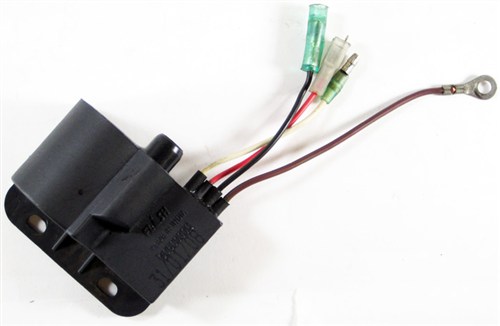 Otherwise, you may need to replace the drum and shoes as a set.
Otherwise, you may need to replace the drum and shoes as a set.Yamaha Motor Company Limited is among the shapers of the ATV industry and is the maker of the Yamaha Grizzly 600 4×4. This industry-leading company is the world’s best in water vehicle sales and was initially widely known for its piano and reed organ production. Despite being highly respected in the automotive and motorcycle industries, the Japanese conglomerate did not get into these segments until 1945 (after World War II).
Parting ways with its parent company in 1955 allowed the firm to focus on developing top-of-the-line product offerings, which include motorsports, off-road vehicles, personal watercraft, speed boats, and outboard motors.
As the first of its breed, the Grizzly 600 not only paved the way for Yamaha’s big-bore journey but also raised the bar for the competition to follow suit. But while it was recognized as a mighty 4×4 right out of the gate, it had minor hiccups and a flawed suspension that pushed Yamaha to go back to the drawing board.
Its reign as King of 4x4s may have been short-lived, but not in vain. The versions that succeeded it turned out to be revolutionary vehicles that could carry on their predecessor’s legacy. Today, the quad’s lineage continues to offer aid and enjoyment to countless folks and thrill-seekers – thanks to the example set by the Yamaha Grizzly 600 4×4.
The Tri-Moto was Yamaha's first ATV sold in the US. It was equipped with a 123 cc two-stroke engine with a separate lubrication system, CDI electronic ignition, a snorkel-style air intake and five gears in the transmission.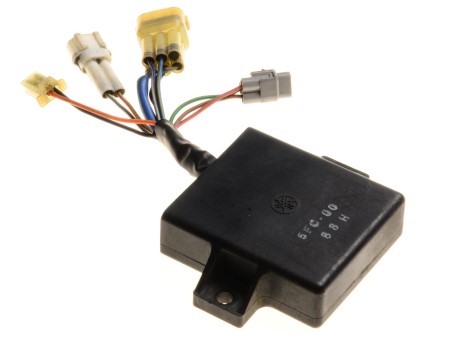 It was conceived not only as a reliable workhorse, but also as an extreme transport for entertainment. The suspension of the tricycle was rigid, shock-absorbing functions were assigned to low-pressure tires. This seemed to be enough for low speeds.
It was conceived not only as a reliable workhorse, but also as an extreme transport for entertainment. The suspension of the tricycle was rigid, shock-absorbing functions were assigned to low-pressure tires. This seemed to be enough for low speeds.
123cc 2-stroke 2WD
This XT200 four-stroke motorcycle was the world's first ATV with electric start and shaft drive. Motor vibrations were reduced by a balance shaft. These features instantly made the model popular in the market. The YTM225DX also featured a Monocross rear suspension and a telescopic front fork. The front disc brake had a mechanical drive (cable).
223 cm3, 4-stroke, 2WD
A utility modification of the YTM225DX model, it was distinguished by the installation of extensive trunks in front and behind, as well as a hitch.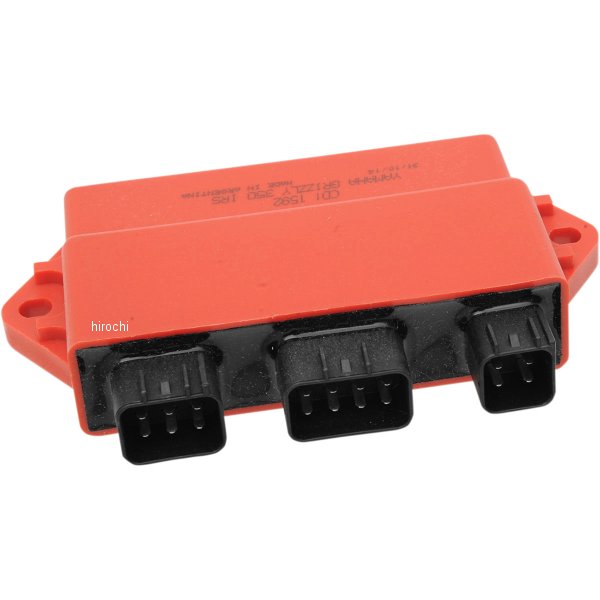 The electric start was supplemented by a manual starter with an automatic decompressor.
The electric start was supplemented by a manual starter with an automatic decompressor.
223cc 4-stroke 2WD
This 59cc ATV was Yamaha's first ATV for teenagers. It had a rear axle shaft drive, a fully automatic transmission, an adjustable speed limiter and an ignition safety switch. Parents could easily limit the engine speed, and then, as the young driver gained experience, increase them.
59cc 2-stroke 2WD
This model was Yamaha's first 4-wheel ATV. It was equipped with a 196 cc four-stroke engine, a snorkel-style air intake, a rear axle shaft drive, an electric starter, an automatic centrifugal clutch and luggage racks front and rear. A valuable feature of the YFM200 was the reverse gear.
196cc 4-stroke 2WD
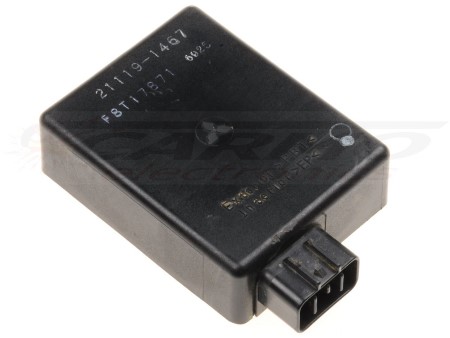 The 79cc four-stroke engine was quiet and reliable. The four-speed transmission included an automatic centrifugal clutch and a shaft-driven rear axle, minimizing maintenance.
The 79cc four-stroke engine was quiet and reliable. The four-speed transmission included an automatic centrifugal clutch and a shaft-driven rear axle, minimizing maintenance. 79cc 4-stroke 2WD
Yamaha's first high-tech ATV. The 250 cc high power two-stroke engine was liquid-cooled and was unified with the power units of the YZ series sports motorcycles. Used front and rear disc brakes, pneumatic fork, Monoshock rear suspension. The low center of gravity was achieved by placing the gas tank under the seat.
246 cc 2-stroke 2WD
4-Zinger was Yamaha's first 60cc four wheel ATV. It was distinguished by a rear axle shaft drive, an adjustable speed limiter and an ignition safety switch. Parents could easily limit the engine speed, and then, as the young driver gained experience, increase them.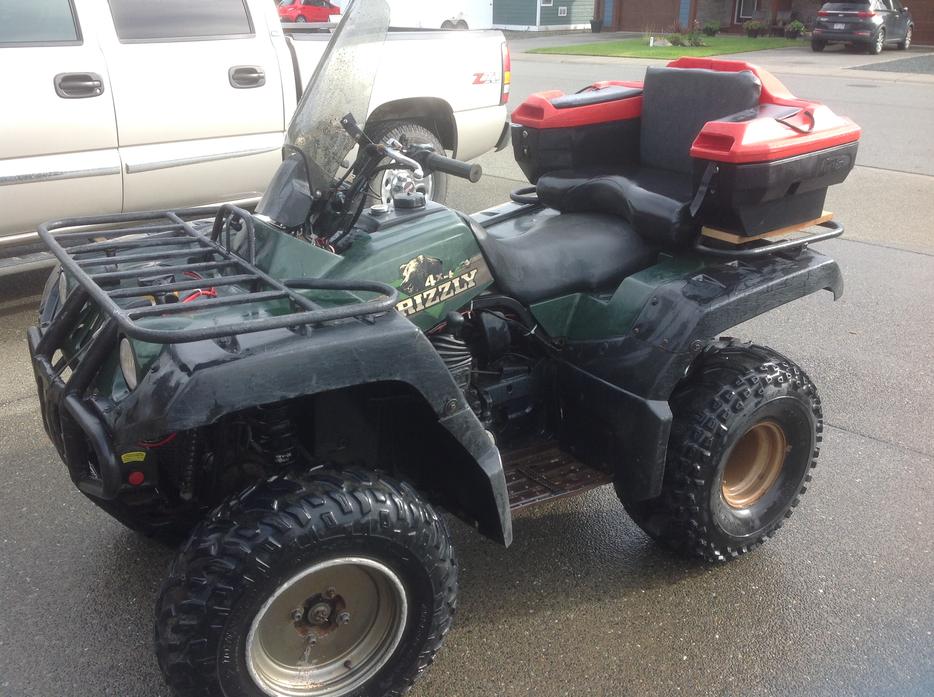 The cladding and graphics have been designed to give the ATV the feel of a small pickup truck.
The cladding and graphics have been designed to give the ATV the feel of a small pickup truck.
59cc, 2-stroke, 2WD
Not only was the Warrior the world's first electric start sport ATV, it is the world's best-selling ATV in its class. This proves the high efficiency of the 350cc four-stroke engine, six-speed transmission with reverse, adjustable long-travel suspension and hydraulic disc brakes front and rear.
348cc 4-stroke 2WD
The most popular racing model received the largest two-stroke engine in the history of ATV. Two cylinders with a total working volume of 350 cm3 were cooled with liquid. The engine was structurally based on the power units of the legendary road racing motorcycles of the RD / RZ family. The Banshee immediately won the prestigious Baja 1000 desert race.
347cc 2-stroke, 2-cylinder, 2WD
In 1987, Yamaha released its first 4x4 class ATV. Big Bear ("Big Bear") was equipped with a 350 cc four-stroke engine with an oil cooler. The transmission had Hi-Lo modes (high - low gear), a total of 10 gears and reverse, axle drive shafts, self-locking front-wheel differential type TCD (Torque Control Differential). An electric starter, front hydraulic brakes and a DC outlet for connecting accessories were also installed. The high class of equipment, combined with amazing reliability, was appreciated by consumers: many Big Bears are still in service.
Big Bear ("Big Bear") was equipped with a 350 cc four-stroke engine with an oil cooler. The transmission had Hi-Lo modes (high - low gear), a total of 10 gears and reverse, axle drive shafts, self-locking front-wheel differential type TCD (Torque Control Differential). An electric starter, front hydraulic brakes and a DC outlet for connecting accessories were also installed. The high class of equipment, combined with amazing reliability, was appreciated by consumers: many Big Bears are still in service.
349 cc, 4-stroke, 4WD
The first cargo bed ATV was powered by a 230cc four-stroke engine. Features of the ATV - lockable rear wheel differential, sealed drum brakes, reverse gear. An electric fan controlled by a temperature sensor was supplied as an option. The Pro Hauler was stock with a 10-speed Hi-Lo transmission and all-terrain tires; while the Turf was fitted with turf-friendly tires and a low gear-only transmission for commercial use.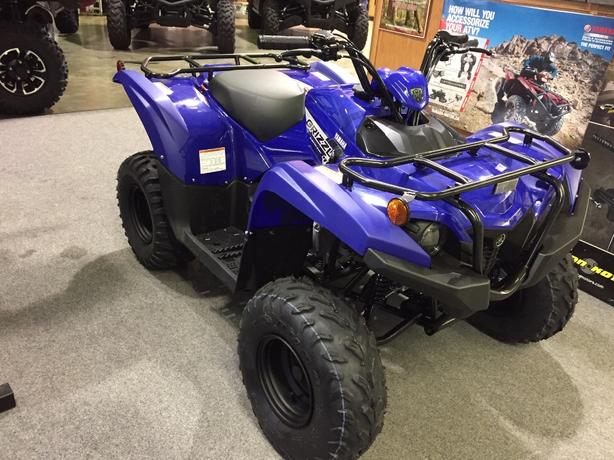
229.6 cm3 4-stroke 2WD
The Terrapro holds a special place in ATV history as the first and only ATV with a Power Take Off (PTO) shaft. This option allowed the use of many attachments (various types of mowers, cultivators, agricultural sprayers, drills, etc.). The all-terrain vehicle was equipped with a 350-cc four-stroke engine with forced air cooling, a transmission with Hi-Lo modes (10 gears) and a reverser blocked by a rear wheel differential.
349 cc, 4-stroke, 2WD
Yamaha's first 4-wheel ATV with automatic transmission. The 125cc four-stroke engine is paired with a CVT transmission with centrifugal automatic clutch and reverse gear. The engine was cooled by a fan, an electric starter was installed. Platforms were made for the driver's legs, a front linkage suspension and a rear pendulum suspension were used in the chassis.
124 cm3, 4-stroke, 2WD
Wolverine was the world's first 4x4 sport ATV. It was driven by a perfect 349 cc four-stroke engine, and the transmission used a five-speed gearbox with reverse, a limited-slip differential of the front wheels of the TCD type. The chassis used a front double wishbone suspension, a pendulum rear Monocross, hydraulic disc brakes.
348cc, 4-stroke, 4WD
The Grizzly 600 sets new standards in quality, comfort and ease of use for the utility vehicle class. The engine, which at that time had the largest cubic capacity among utility ATVs (595 cm3), had high torque; it was interlocked with the revolutionary Ultramatic transmission. Yamaha was one of the first to use CVT engine braking systems and an electric 2WD/4WD switch. The Grizzly 600 immediately took the lead in the class.
595cc 4-stroke 2WD/4WD
The BearTracker was Yamaha's first ATV built in the USA at Newnan, Georgia. Rugged, reliable, versatile and class-leading, the BearTracker quickly won the hearts of thousands of owners. The combination of an affordable price, impressive traction and enviable economy also added to the ATV's popularity.
229.6 cm3 4-stroke 2WD
Yamaha's first camouflaged ATV (Buckmaster® Edition). This model was designed specifically for hunters.
386cc 4-stroke 2WD
Grizzly 660 has raised the bar for utility 4x4 ATVs. A feature of the model was the control of the front differential lock with the help of a button and the first independent rear wheel suspension for Yamaha all-terrain vehicles.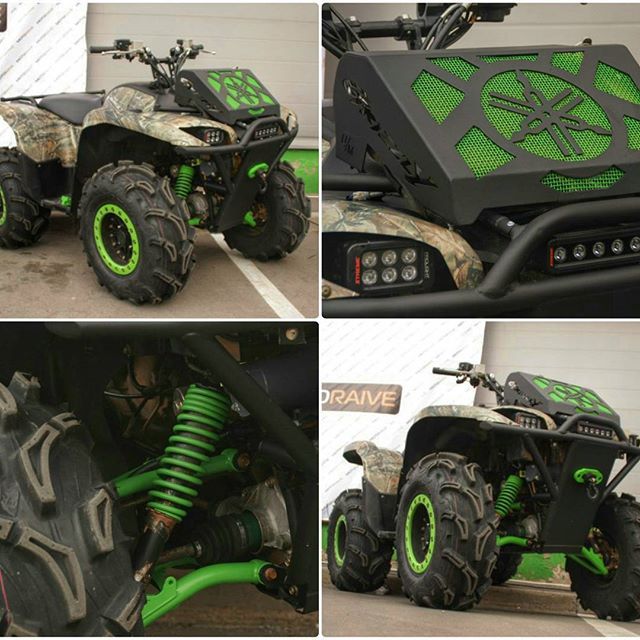
660cc 4-stroke 2WD / 4WD
Yamaha has set a new benchmark for sport ATVs with the introduction of the 660R Raptor. The Predator used a YZ motorcycle engine, the largest cubic capacity ever installed in a sport ATV. Its cylinder head housed five valves, also a first in ATV history. The outstanding engine performance was complemented by a five-speed manual transmission, state-of-the-art chassis and race-proven suspension, all of which helped win the 660R Raptor the title of "Best Sport ATV of 2001".
660 cm3, 4-stroke, 2WD
Rhino ("Rhino") was equipped with a powerful single-cylinder, four-stroke, five-valve liquid-cooled engine, in the transmission - a dual-mode V-belt variator with an Ultramatic engine and reverse braking function. The button on the panel can turn on the front axle and differential lock. Independent front and rear suspensions with a large working stroke, and ground clearance (307 mm - the most significant in the class) and "toothy" tires - all for comfortable off-road driving.
Independent front and rear suspensions with a large working stroke, and ground clearance (307 mm - the most significant in the class) and "toothy" tires - all for comfortable off-road driving.
660cc 4-stroke 2WD / 4WD
Winning almost every race or championship, this revolutionary model set the quality standard for its ATV class. It allowed every customer to be competitive in races of any level. A powerful five-valve titanium engine and a dry weight of 158.6 kg gave the YFZ450 the best power-to-weight ratio of any ATV ever made. An ultra-compact and rigid steel frame provided exceptional handling. The standard equipment of the YFZ450 included: electric starter, parking brake and adjustable suspension.
439cc 4-Stroke 2WD
at the top." The Raptor 700R, the first sport ATV to feature fuel injection, ensures consistent engine performance under varying conditions, regardless of altitude or temperature. For the first time in its class, a hybrid frame made of steel and aluminum alloys was used. Thus, the Raptor 700R is the lightest ATV in its class.
For the first time in its class, a hybrid frame made of steel and aluminum alloys was used. Thus, the Raptor 700R is the lightest ATV in its class.
686 cm3, 4-stroke, 2WD
The model was the first among ATVs equipped with EPS (Electric Power Steering) - electric power steering. This system reduces the effort applied by the rider to the steering wheel, which increases comfort and, in general, expands the capabilities of the ATV.
686cc 4-stroke 2WD / 4WD
ATV equipped with 558cc engine incorporates most of the advanced performance features of the older 700cc variable power steering, including revolutionary power steering . A new crankshaft made it possible to achieve higher smoothness of operation, a new cylinder head with an elongated spark plug improved starting characteristics. The model set new standards for the middle class ATV. A wide choice of attachments allows you to adapt the machine to the needs of the client.
The model set new standards for the middle class ATV. A wide choice of attachments allows you to adapt the machine to the needs of the client.
558 cc, 4-stroke, 2WD/4WD
All-new sports ATV fuel injected engine with titanium valves boosts low to mid-range traction. The new aluminum alloy frame is 15% lighter and stiffer than before, resulting in improved handling. The geometry of the undercarriage has also been changed: the base has been shortened, and the track has been widened. A new suspension with increased travel and more energy-intensive shock absorbers has been used. Thus, we have one of the best cross-country ATVs in its class, capable of participating in high-level competitions right in the basic configuration. This sets it apart from its competitors.
449 cc, 4-stroke, 2WD
Equipped with a modified four-stroke engine, the compact ATV is designed for teenagers over 14 years old.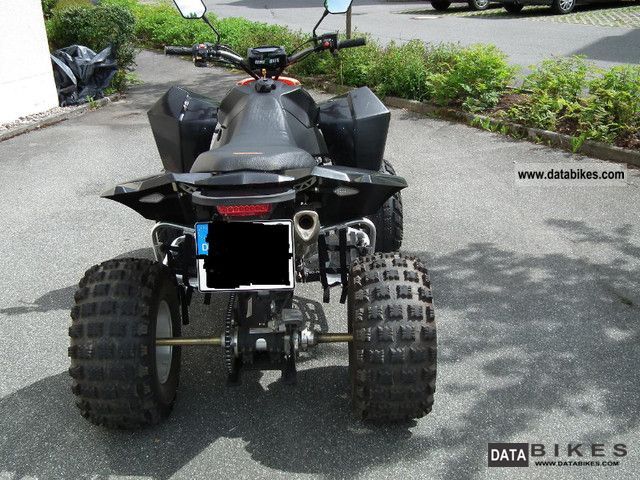 Throttle travel limiter allows engine performance to be adapted to the driver's skill level, and a parking brake is provided. The simple and robust design is also suitable for adult use.
Throttle travel limiter allows engine performance to be adapted to the driver's skill level, and a parking brake is provided. The simple and robust design is also suitable for adult use.
88cc 4 stroke 2WD
An economical version of a working rear-wheel drive ATV, equipped on a par with the "big brothers". All-wheel disc brakes, long-travel adjustable suspension and sturdy luggage racks are just as good as more expensive models. The high-torque liquid-cooled engine not only carries the necessary loads, but also gives a fair amount of "fun" when using the machine for recreation. If the traction seems insufficient, it is enough to turn on a lower gear - paired with a variator, it will help move the heaviest trailer. A low curb weight will come in handy in difficult places.
287 cc, 4-stroke, 2WD
This is the first 3-seater multipurpose ROV (Recreational Off-highway Vehicle) in its history.